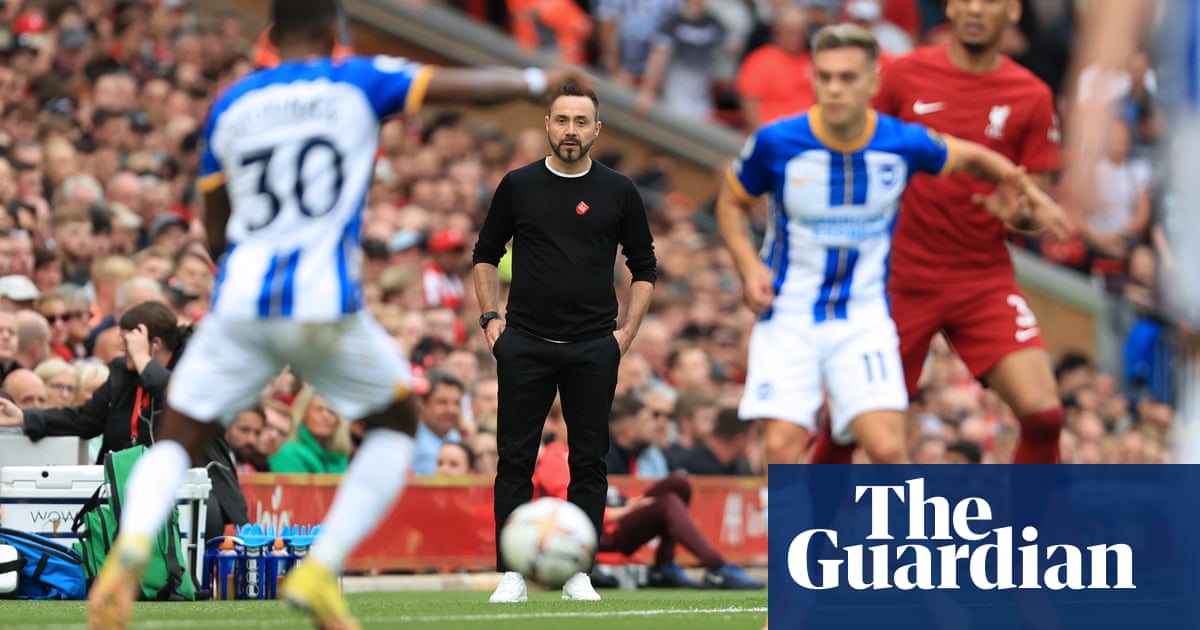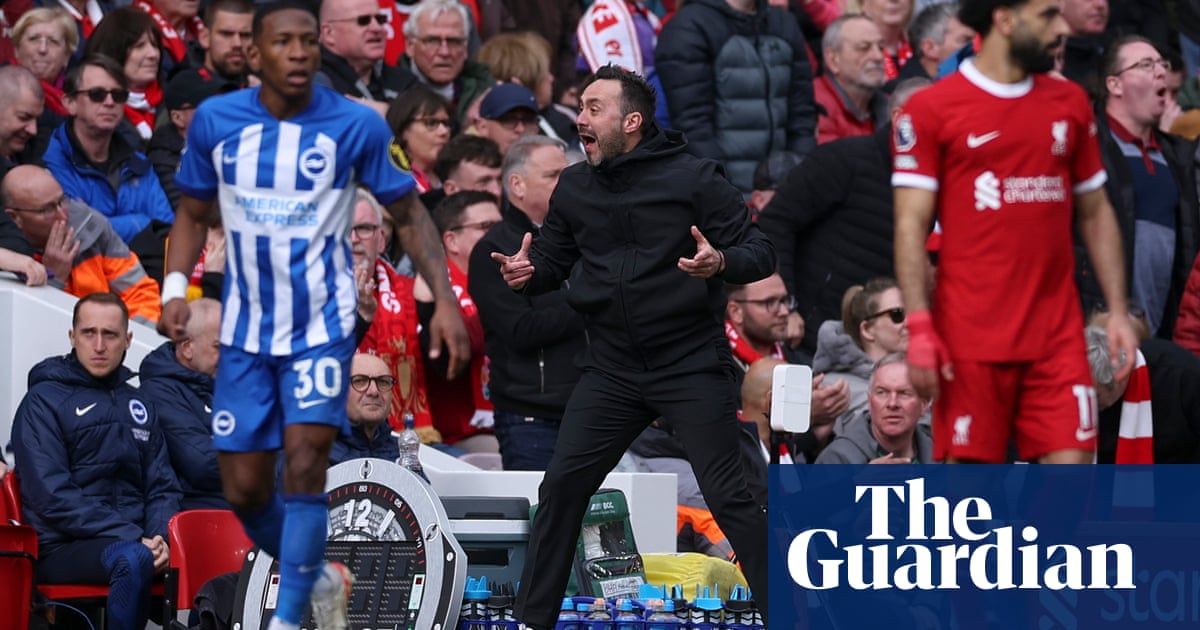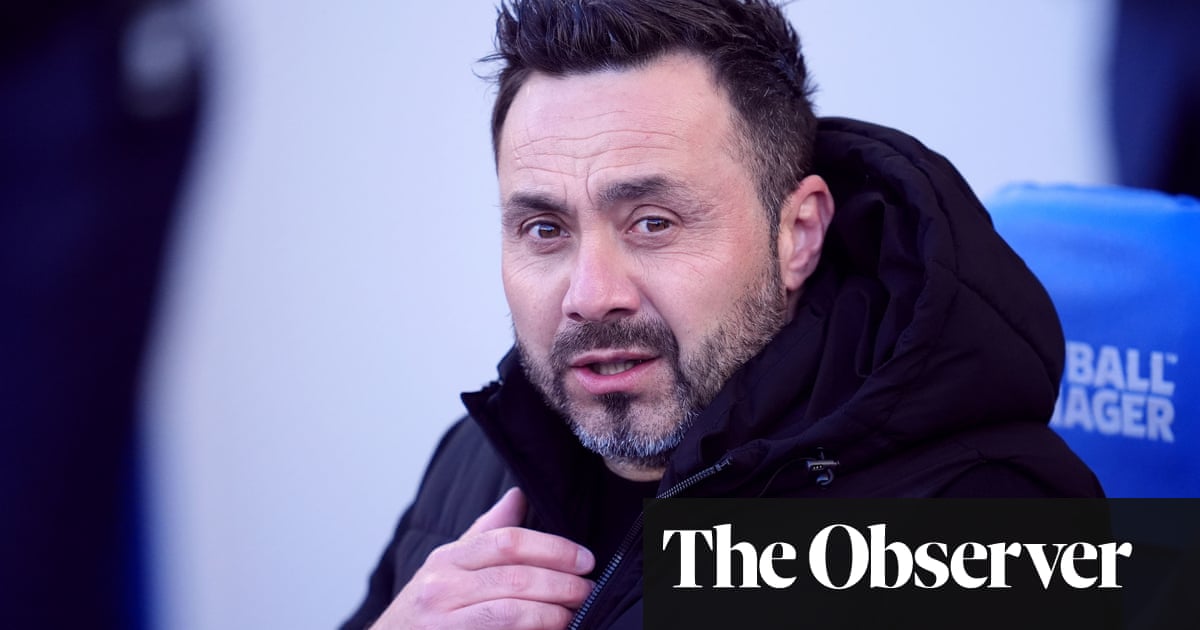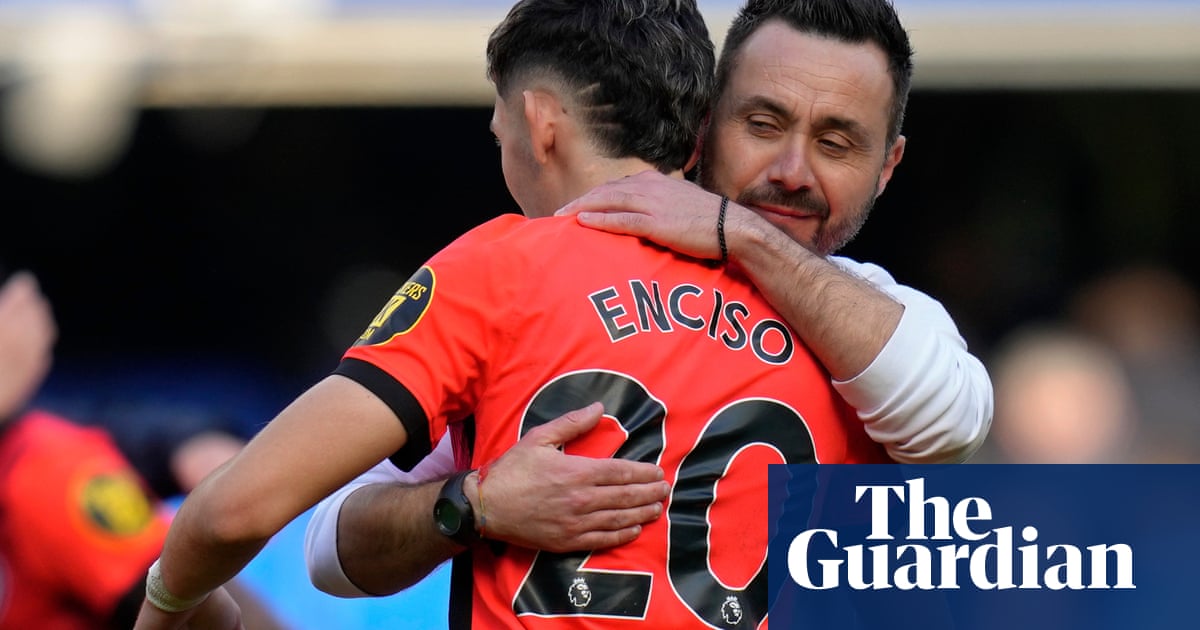
“I was a pain in the ass as a footballer,” Roberto De Zerbi once said. And, in a way, he was a player hopelessly out of his time: a pure No 10 coming through at the turn of the century, just as they were disappearing from the game.
A maverick and a thrill-seeker in a sport tending increasingly towards regimentation. Good enough to be at Milan without ever being good enough to play for them. Even when he dropped down to third-division Lecco on loan, he fell out with manager Roberto Donadoni. His ability with a ball was never in doubt; his ability to adapt always was. “I am a dreamer,” he would later tell La Gazzetta dello Sport. “Very ambitious, honest but unstable, impatient and fiercely volcanic.” For De Zerbi, football had to be played his way if it was worth doing at all. Fortunately, there was a career that would allow him to do just that.
It was while seeing out his playing days at CFR Cluj that the idea of becoming a coach began to gestate into something more. Unimpressed with the cultural charms of Romania’s second city, he spent his evenings watching football exhaustively – Guardiola’s Barcelona, Mourinho’s Internazionale, Van Gaal’s Bayern – but with a critical eye. Every grinning wannabe who rolls off the Uefa pro licence course wants to be Pep Guardiola. De Zerbi was more interested in bolting on his own ideas, fusing Spanish passing football with German pressing with Italian tactical strength to create something distinctive and fresh. His final thesis at Coverciano, the Italian national coaching academy, was entitled “Il mio modello di gioco”. My model of the game.
This is the rich blueprint that De Zerbi is beginning to implement at Brighton. And there are times when watching them – as with his groundbreaking Sassuolo team – when it is possible to wonder whether we are witnessing the next little shift in the game, the vision that bumps football a little further up the road.
And if this feels like something of a leap for a club sitting eighth in the Premier League and a coach who has been in the job less than six months, then when Brighton visited the Etihad Stadium in October, Guardiola was convinced that he had watched something entirely new. “They propose a type of game we’re not used to,” Guardiola said after a 3-1 Manchester City victory achieved with 48% possession. “His impact in England will be massive.”
So what is this vision? Let’s start with a little potted, broad-brush tactical recap: about a decade ago, Spanish-style possession football – what your mate down the pub still probably knows as tiki-taka – was gradually supplanted by a more chaotic, aggressive game based above all on high pressing and quick transitions. Pressing became the new passing, and as the gospel of pressing developed in scale and complexity, sterile possession in defensive areas became a target to be hunted down. For teams with the ball, the aim was to get it up the pitch as quickly and constructively as possible. Press-resistant midfielders became the vogue. The ability to play pinpoint mid-range passes became a required goalkeeping trait.
What De Zerbi is doing at Brighton may not be revolutionary or strictly new, because nothing in football is ever really new. But in the Premier League at least, it has not been done as audaciously or deliberately as this. Like most top teams, Brighton play out from their goalkeeper, Robert Sánchez. But unlike them, Brighton will often continue patiently recycling the ball in their own danger zone, often for up to 10 or 15 passes.
It is why De Zerbi’s teams frequently enjoy more than 70% possession. But it is also the very thing modern football convention warns you not to do. It makes crowds nervous. Give the ball away and you’re dead. In his Coverciano thesis, De Zerbi argues that central defenders must “have the pleasure of holding the ball, of building the game, knowing that everything starts from them”.
The idea of this possession tightrope is to provoke opponents into overstretching, committing one too many to the press, at which point Brighton neatly play their way out – easier said than done, of course – and wreak havoc in the open spaces. Done right, it is a tactic that turns the doctrine of high pressing – elite football’s dominant motif of the past 10 years – in on itself. Never was this more evident than in the two wins over Jürgen Klopp’s Liverpool this year, when Brighton frequently invited Liverpool’s press, toyed with them, moved them around, before decisively cutting them open.
Here is where the influence of De Zerbi’s playmaking past comes in. “When I played I didn’t want them to send me long balls,” he explained to El País in 2021. “I wanted the ball to feet. By starting from the bottom up, the ball arrives clean, not high and dirty.”
The Shakhtar Donetsk side he managed until last summer often played with two or three technical No 10s. For Brighton the role can be fulfilled by a rotating cast of at least half a dozen – Alexis Mac Allister, Solly March and Kaoru Mitoma, Adam Lallana, Facundo Buonanotte, Jeremy Sarmiento – who, whatever their starting position, are most comfortable with ball at feet, driving into the three‑quarter spaces.
Whether this marks a decisive shift or simply a fleeting curiosity remains to be seen. Certainly it feels too soon to be sounding the death knell for elite pressing football or hailing the revenge of tiki-taka. But with a modest squad, a little time and a human touch, De Zerbi has taken one of the Premier League’s low-income clubs to within striking distance of Champions League football, challenging some of the game’s most established conventions in the process. At the very least, this feels like a story worth watching closely.












